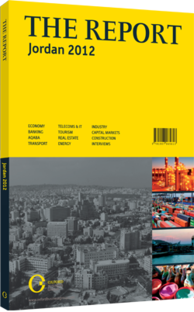Big plans: Major projects advance despite limited funding
With a push to increase its stake in a growing Middle Eastern tourism market, Jordan has undertaken a number of construction projects that are being led by both international and local contractors. While the global financial crisis and regional property crash still cast a shadow, signs in late 2011 and early 2012 indicate that the clouds are starting to clear in some segments.
FUNDING CHALLENGES: “Banks are being very conservative in their cash-flow analyses for mega projects,” Ahmad Abd Al Halim, the senior vice-president at Arab Bank, told OBG. Yet financing prospects for large projects are starting to look brighter. In October 2011 Emirati investors injected $240m into Saraya Aqaba – a $1bn development including villas, hotels and a commercial zone – which had been stalled since 2008 because of funding constraints. “Attracting such investment helps improve the project’s debt-to-equity ratio, making it a more attractive target for banks,” Al Halim told OBG. The $1bn Red Sea Astrarium, a themed entertainment resort to be built in Aqaba by the end of 2014, has also managed to attract the interest of banks.
The Abdali Downtown Development is one large project that has persevered through the recent credit crunch, receiving several bank loans since the regional property crash began in 2008. Set to become Amman’s new commercial hub, the development will also attract tourism. Around 10% of the 1.7m sq metres under construction will go to hotels, and a further 18% to retail.
Despite some construction delays, activity has accelerated visibly and is progressing at a good pace, as of March 2012. Abdali’s developers are optimistic. “The Boulevard will open partially by the end of 2012,” George Amireh, the CEO of the Abdali Development Corporation, told OBG. The UAE-based hotel operator Rotana said its newly built 400-suite serviced apartments at the centre of the development will open in mid-2013.
SUSTAINED HIGHS: Kuwait’s United Real Estate Company (URC) announced the start of construction on Abdali’s mall in December 2011, expecting the complex to open in early 2014. The residential properties being developed by Damac, the UAE-based property developer, are also due for completion by mid-2013. Damac reported significant progress on construction in October 2011, while working with two Jordanian contracting firms, United Engineering Construction and El Concorde Construction. The $10bn Marsa Zayed project, Jordan’s most costly mixed-use real estate development to date, has not suffered from lack of financing and its construction is on schedule. Yousef Al Nowais, the chairman and managing director of UAE-based Al Maabar International Investments, the project’s developer, said the first phase would be completed by 2014. In addition to hotels and leisure attractions, the development includes villas and apartments, as well as a business district. Jordanian construction firms are gearing up for the work. “We have submitted pre-qualification documents for part of the work,” Mecheal Deir, the general manager at Jordanian firm HabashDeir Contractors, told OBG in February 2012.
LOOKING AHEAD: Despite such resilience, Jordanian contractors are still wary of late payments. As of March 2012 contractors in the Saraya Aqaba project finally received a quarter of the JD40m ($56.2m) owed by the developers. Ahmed Tarawneh, the president of the Jordanian Construction Contractors Association, said that this would “partially stimulate” the completion of their work and assure the salaries of employees.
At the Dead Sea, work has begun on the $1bn Samarah Golf and Beach Resort by Emaar International Jordan. “We just finished the Dead Sea Master Plan, which determines the next 25 years at the Dead Sea Development Zone. It was formed in consultation with the government, and we are awaiting cabinet approval,” Amal Zanoun, the director of the projects & Infrastructure Department at the Jordan Development Zones Company, told OBG. Initial activity will focus on the promenade at the sea’s northern end. “Construction will mostly be on a small-to-medium scale, with parcels ranging from less than one dunum in size to 27 dunum, allowing smaller local firms to get involved,” Zanoun said.
You have reached the limit of premium articles you can view for free.
Choose from the options below to purchase print or digital editions of our Reports. You can also purchase a website subscription giving you unlimited access to all of our Reports online for 12 months.
If you have already purchased this Report or have a website subscription, please login to continue.

